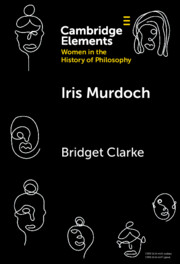229 results
1 - Augustinianisms and Liberalisms
-
- Book:
- Political Theology and the Conflicts of Democracy
- Published online:
- 21 March 2025
- Print publication:
- 03 April 2025, pp 35-94
-
- Chapter
- Export citation
5 - Loving in Conflict
-
- Book:
- Political Theology and the Conflicts of Democracy
- Published online:
- 21 March 2025
- Print publication:
- 03 April 2025, pp 280-326
-
- Chapter
- Export citation
A Case for Caregiver Testimony about the Cognitively Disabled
-
- Journal:
- Episteme , First View
- Published online by Cambridge University Press:
- 24 March 2025, pp. 1-15
-
- Article
-
- You have access
- Open access
- HTML
- Export citation
Screening Love: Relational Practices in Japanese TV Dramas Produced During the COVID-19 Pandemic
-
- Journal:
- Asia-Pacific Journal / Volume 20 / Issue 14 / July 2022
- Published online by Cambridge University Press:
- 14 March 2025, e2
-
- Article
- Export citation

Iris Murdoch
-
- Published online:
- 07 March 2025
- Print publication:
- 03 April 2025
-
- Element
- Export citation
3 - The Good Samaritan (Lk 10:25–37)
-
- Book:
- Luke's Unique Parables
- Published online:
- 28 February 2025
- Print publication:
- 06 March 2025, pp 22-41
-
- Chapter
- Export citation
2 - The Parable of the Two Debtors (Lk 7:36–42)
-
- Book:
- Luke's Unique Parables
- Published online:
- 28 February 2025
- Print publication:
- 06 March 2025, pp 17-21
-
- Chapter
- Export citation
A Formula for Love: Partner Merit and Appreciation Beget Actor Significance
-
- Journal:
- Behavioral and Brain Sciences / Accepted manuscript
- Published online by Cambridge University Press:
- 04 March 2025, pp. 1-68
-
- Article
- Export citation
Holding Your Loved Ones through a Museum Exhibit
- Part of
-
- Journal:
- Public Humanities / Volume 1 / 2025
- Published online by Cambridge University Press:
- 04 February 2025, e50
-
- Article
-
- You have access
- Open access
- HTML
- Export citation
Introduction
-
- Book:
- Love and Violence in Sierra Leone
- Published online:
- 28 January 2025
- Print publication:
- 23 January 2025, pp 1-18
-
- Chapter
-
- You have access
- Open access
- HTML
- Export citation
15 - The Individual’s Relationship with God
- from Part IV - Forms and Functions of Worship
-
-
- Book:
- The Philosophy of Worship
- Published online:
- 09 January 2025
- Print publication:
- 23 January 2025, pp 278-295
-
- Chapter
- Export citation
Chapter 24 - Eroticism
- from Part V - Gender, Sexuality, and the Body
-
-
- Book:
- Gerard Manley Hopkins in Context
- Published online:
- 16 January 2025
- Print publication:
- 16 January 2025, pp 210-216
-
- Chapter
- Export citation
9 - Looking Inside: The Second Pair of Wings
- from Part II - Commentary
-
- Book:
- Bonaventure's 'Journey of the Soul into God'
- Published online:
- 23 November 2024
- Print publication:
- 28 November 2024, pp 334-391
-
- Chapter
- Export citation
16 - Love, Desire and Erotics
- from Part V - Epic Feelings
-
-
- Book:
- The Cambridge Companion to Ancient Greek Epic
- Published online:
- 04 December 2024
- Print publication:
- 28 November 2024, pp 334-356
-
- Chapter
- Export citation
Chapter 1 - A Medical Student
-
- Book:
- An Improbable Psychiatrist
- Published online:
- 07 November 2024
- Print publication:
- 21 November 2024, pp 7-16
-
- Chapter
- Export citation
Knowledge bloats, love builds: Paul on how we are (not) to know things
-
- Journal:
- Scottish Journal of Theology , First View
- Published online by Cambridge University Press:
- 15 November 2024, pp. 1-11
-
- Article
-
- You have access
- HTML
- Export citation

A Philosopher Looks at Friendship
-
- Published online:
- 09 November 2024
- Print publication:
- 18 July 2024
6 - Conclusion
-
- Book:
- The Theological Imagination
- Published online:
- 09 November 2024
- Print publication:
- 07 November 2024, pp 161-168
-
- Chapter
- Export citation
3 - Promising Marriage
- from Part I - Marriage
-
- Book:
- Inducing Intimacy
- Published online:
- 26 October 2024
- Print publication:
- 07 November 2024, pp 64-87
-
- Chapter
- Export citation
1 - Sex, Lies, and Abandoned Families
- from Part I - Separation Anxieties
-
- Book:
- Foreign in Two Homelands
- Published online:
- 31 August 2024
- Print publication:
- 31 October 2024, pp 51-95
-
- Chapter
-
- You have access
- Open access
- HTML
- Export citation


